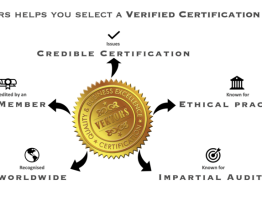Globally, the preparedness of organizations to identify & mitigate the business risks is far less than a decade ago. Globalization is no doubt a contributing factor. It has driven greater connectivity, enabling people, goods and services to move freely improving the quality of life, especially for people in the developing world. However, globalization has also triggered backlash from those who have been left behind, prompting populist leaders in the West to pull back and protect what they believe is in their national interest.
Regionally, organizations in Asia Pacific and Latin America rank the risk much higher than those in North America, probably due to concerns about the inward-looking policy platforms and protectionism that could harm businesses in their regions.
Some discoveries are encouraging, but others are worrisome. For example, despite the availability of more data and analytics, and more mitigation solutions, a very large number of organizations are less prepared for risk. Risk-preparedness is at its lowest level since 2007. With the fast speed of change in a global economy and increasing connectivity, the impacts of certain risks, especially those uninsurable ones, are becoming more unpredictable and difficult to prepare for and mitigate.
In a general survey done by a credible organization, the TOP 10 business risks determined are as follows:
- Damage to reputation/brand
- Failure to innovate/meet customer needs
- Failure to attract or retain top talent
- Economic slowdown/slow recovery
- Increasing competition
- Regulatory/legislative changes
- Cyber crime/hacking/viruses/malicious codes
- Business interruption
- Political risk/uncertainties
- Third party liability
These days, It is imperative for organizations to do a risk assessment to identify and mitigate, internal & external business risks.
ISO 9001:2015, a revised version of ISO 9001:2008 standard, addresses risk & opportunity based assessment of the organization and its mitigation. The latest ISO 9001 standard is intended to be a set of requirements that represent the good practices that forms an integration of a Quality Management System (QMS) and business management system.
The organizations those who want to take informed decisions to survive and excel, shall assess and address the risks and opportunities to their businesses, as a standard course of action. These business risks may be internal and/or external. The clause 6.1 of ISO 9001:2015 standard addresses organizational planning to take necessary actions to determine risks and opportunities.




